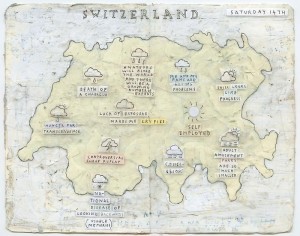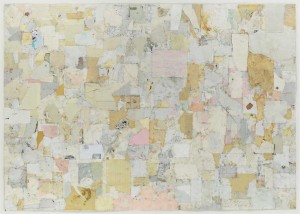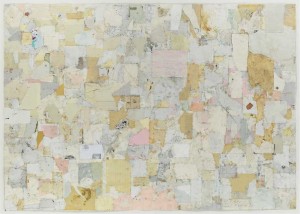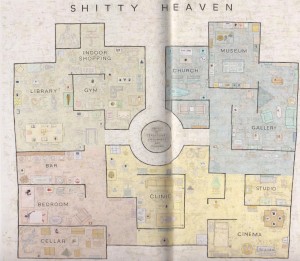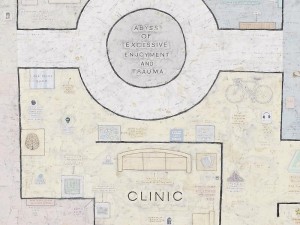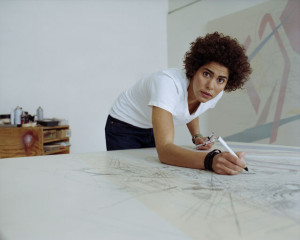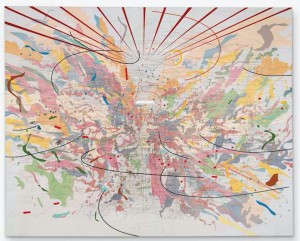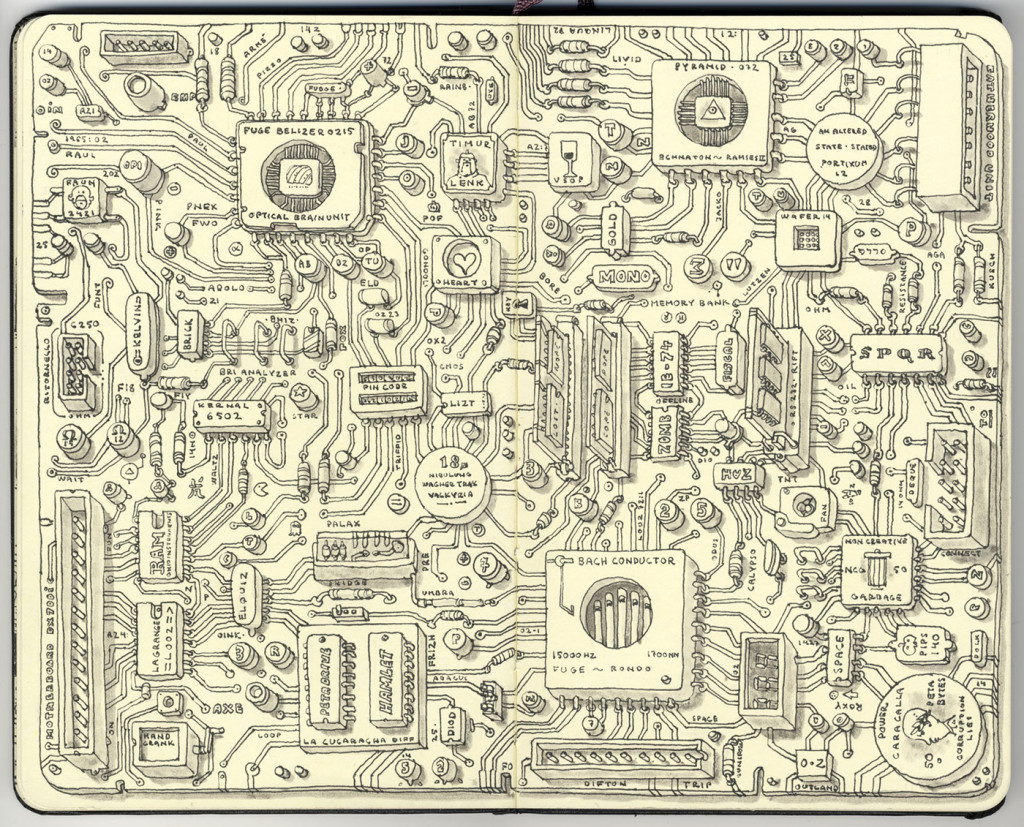This post is for our students at Tennessee Governor’s School for the Arts in the Sketchbook Boot Camp Class, weeks 3-4.
Assignment 1: Hand-Bound Books and Hand-Crafted Memories

We begin with a brief book-binding tutorial, where you will learn to create Pamphlet Stitch Books using either the 3 or 4 hole techniques. If you need a refresher on the 4-hole version after the demonstration, check out our post, here: DIY Book Binding, Vol. 1: The 4-Hole Pamphlet Stitch Mini Book.
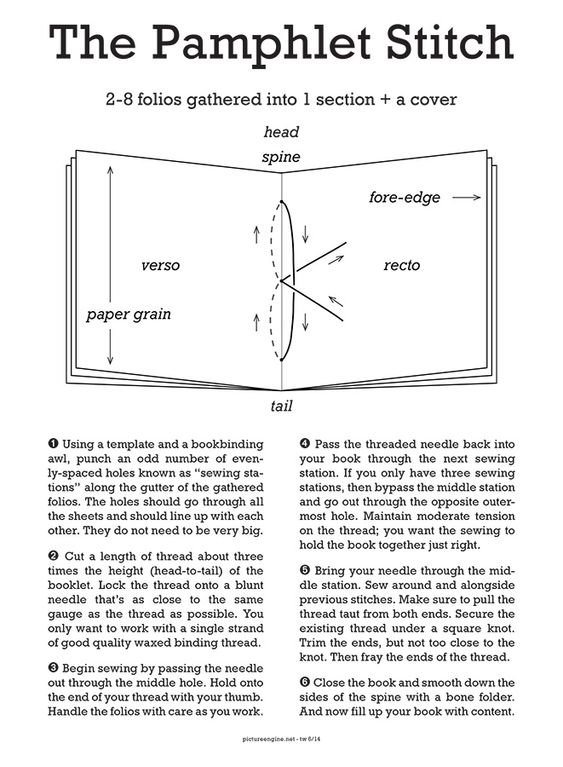
3-hole pamphlet stitch
Next, check out the Bored and Brilliant Challenge Day 2: Photo Free Day. After reading and listening to the story, embark on your very own Photo Free Day.
Consider how photography affects your experience of the world around you. Do you photograph your meals, friends, yourself, the landscape, etc. on a daily basis? Multiple times a day? How do you distribute this material? Is it kept on your phone and/or shared on various social media?
Everything you would have taken a photo of, instead do a drawing in your brand new pamphlet stitched book, collect ephemera from the moment (the leaves from that beautiful tree, a rubbing from the sidewalk near where you saw an unusual pink moth, a written account of a conversation you had with a new friend, or some makeup pulled off your face and smeared onto a page when you skipped a selfie.) and collage it together in your book.
Assignment 2: Creative Mapping
“Out of these landscapes, the distinction of point of view. In a world where access to speed is access to transcendence, point of view is particularly a narrative gesture. The point of view of a landscape is no longer still, is instead a matter of practice and transformation. Modernism’s suspicion of point of view can be seen as a critique of omniscience, but a critique rooted in self-consciousness that proclaims an omniscience of its own ontology, its own history. ”
–“1. On the Description and the Book” from Susan Stewart’s On Longing: Narratives of the Miniature, The Gigantic, The Souvenir, The Collection
Using your sketchbook, create a mini atlas of a place from your memory, inspired by, but not enslaved by the constraints of reality. Mapping is not only a way of transferring real information about a place, but also a means to organize ones’ thoughts, ideas, and memories. All maps are, in essence, biased, as if a mapmaker conveyed EVERYTHING about a place, a map would be overwhelming with information. Maps can allow you to see not only the real world in a different light, but also imaginary ones, as in the case of author William Faulkner, who set his books in a fictional county, Yoknapatawpha, of which he also spent extensive time drawing maps.
You could map the neighborhood you grew up in, make a map of your bedroom (and all the most important items in there with their significance), a map of your family’s favorite vacation spots, a family tree, a map showing the areas and wiring of your brain and most significant memories, a map of your body and everything that has happened to it (think scars, how it feels to hold your grandmother’s hand, an additional showing all of your favorite clothes like paper doll clothes drawn out to the side, etc.), map of everywhere you’ve traveled, etc.
Step 1: Brainstorm, make a list of ideas of what you might be interested in mapping
Step 2: Check out the ideas from other artists below or do some of your own research. Through this, consider how you might like to display this information over several pages in your sketchbook.
Step 3: At minimum, create a larger map, a detail cut-away page, and some kind of key for your map. You can be creative in how these forms are interpreted. Feel free to use drawing, collage, etc.–anything! Use Google Maps and other resources if you wish to supplement your ideas and memories of place.

- Simon Evans: http://www.jamescohan.com/artists/simon-evanstm
- MoMA: Maps, Borders and Networks: https://www.moma.org/learn/moma_learning/themes/maps-borders-and-networks
- 25 Artists Inspired by Maps: http://www.complex.com/style/2013/03/25-artists-inspired-by-maps/
- 9 Artists Working with Google Maps: http://www.visualnews.com/2016/01/27/9-artists-working-google-maps-medium/
- Making Maps: Resources for DIY Cartography: https://makingmaps.net/2011/12/05/map-art-exhibitions-2010-11/
- Julie Mheretu: https://art21.org/artist/julie-mehretu/
- Matthew Cusick: http://www.mattcusick.com/

-
Danny Dorling:Maps that show us who we are (not just where we are):
https://www.ted.com/talks/danny_dorling_maps_that_show_us_who_we_are_not_just_where_we_are
- “What does the world look like when you map it using data? Social geographer Danny Dorling invites us to see the world anew, with his captivating and insightful maps that show Earth as it truly is — a connected, ever-changing and fascinating place in which we all belong. You’ll never look at a map the same way again. “
- Whole Series on Mapping: https://www.ted.com/playlists/138/adventures_in_mapping
- Mattias Adolfsson: http://mattiasadolfsson.com/snatched-spreads-23-24-sketchbook
- Nina Morgan: https://www.sketchbookproject.com/library/1459
- Tim Mullins, Mystery Maps: https://www.sketchbookproject.com/library/3924
- David Johannes: https://www.sketchbookproject.com/library/3923
- Sydney Martin: https://www.sketchbookproject.com/library/3920





